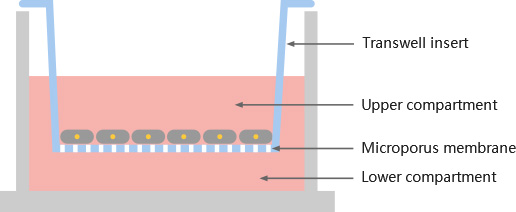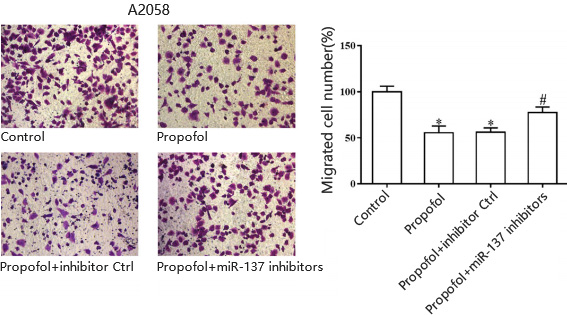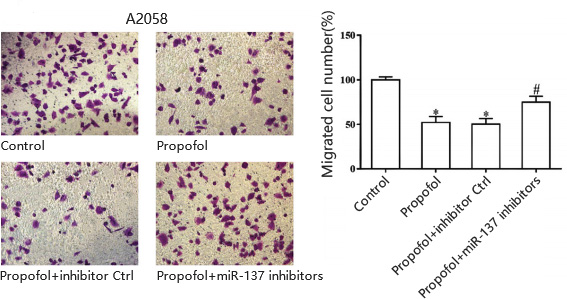Cell migration and invasion
Cell migration, also known as cell crawling, or cell movement, refers to the movement of a cell after receiving a migratory signal or sensing a gradient of certain substances. Cell migration is an alternating process of pseudopodia extension at the cell head, the establishment of new adhesions, and retraction of the cell body tail in a spatiotemporal manner. Cell migration, one of the basic functions of normal cells, is a physiological process of normal growth and development of the organism, and a ubiquitous form of movement of living cells. Cell migration is implicated in processes such as embryonic development, angiogenesis, wound healing, immune responses, inflammatory responses, atherosclerosis, and cancer metastasis.
Cell invasion refers to the ability of cells to migrate from one area to another through the extracellular matrix. Cell invasion is a response of normal and cancer cells to chemical and mechanical stimuli. Before migrating to new areas, the extracellular matrix is degraded by proteases within the cell. Cell invasion often occurs during wound repair, vascularization and inflammatory response as well as abnormal tissue infiltration, tumor cell metastasis, and so on.
Technical Details
Transwell assay is a commonly used to detect the migration ability and invasion ability of cells. Transwell assay, as its name, that is, the compartment with densely packed small holes is put into a well plate (commonly a 24 well plate) . The cell suspension is added to the compartment, which is placed in a 24 well plate with complete medium added. The cells can pass through the holes in the compartment by deformation and run to the outside of the more nutritious compartment and attach to the outside. By staining and counting the cells on the outside of the compartment, it can tell the strength of the migration and invasion ability of the cells.The basic principle of Transwell is to put the small compartment into a culture plate, inside the small compartment called upper compartment, inside the culture plate called lower compartment. The upper and lower culture fluids are separated by a polycarbonate membrane, upper compartment is added by upper culture fluid, lower compartment is added by lower culture fluid. Add the cells to the upper compartment, and because the membrane is permeable, the components in the lower compartment can affect the cells within the upper compartment, so that the effects of the components of culture medium in the lower compartment on cell growth, motility, and so on can be studied.
Tumor migration assay is the study of the migratory ability of tumor cells or, in specific circumstances. Commonly 8.0, 12.0 µ m membrane is used, adding the tumor cells to the upper compartment, and FBS or some specific chemokines are added in the lower compartment. Tumor cells will migrate towards the lower compartment with high nutrient content. Counting the number of cells entering the lower compartment can indicate the migration ability of tumor cells.
Tumor invasion assay is the study of the invasive ability of tumor cells or, in specific circumstances. Unlike the tumor cell migration assay, a layer of Matrigel is additionally added above the polycarbonate membrane to mimic the extracellular matrix. Tumor cells are added to the upper compartment, and if tumor cells want to enter the lower compartment, they must first secrete matrix metalloproteinases (MMPs) to pass through the polycarbonate membrane by digesting the Matrigel. Counting the number of cells that enter the lower compartment can indicate the invasive ability of tumor cells.

Case study
A.Cell migration for human skin melanoma cell line A20578
B.Cell invasion for human skin melanoma cell line A20578
Reference
Yu, Hong et al. “Propofol suppresses proliferation, invasion, and migration of human melanoma cells via regulating microRNA-137 and fibroblast growth factor 9.” Journal of cellular physiology vol. 234,12 (2019): 23279-23288. doi:10.1002/jcp.28896
Service turnaround and deliverables

Service turnaround
5~10 business days, depending on cell growth and experimental design

Customer provides
cell lines, drugs, drug treatments and experimental conditions parameter settings;

Deliverables
cell lines, drugs, drug treatments and experimental conditions parameter settings;
Other methods to test cell migration and cell invasion





No comments:
Post a Comment